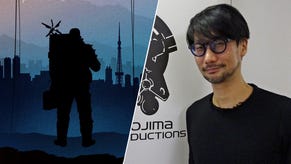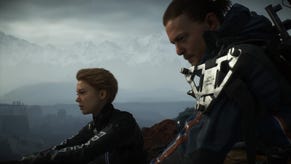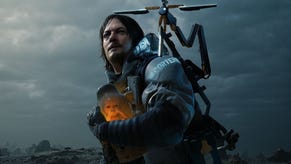Death Stranding review - interesting, incredibly pretty, and kind of dull
Death Stranding is out now on PC, complete with graphical improvements and some PC exclusive content like wearable Half-Life headcrabs. You can read our original review below.
Hideo Kojima has always been fascinated by attrition: Tapping Circle through the pain in Metal Gear Solid's torture scene, Solid Snake gasping as he crawls through MGS 4’s oven hallway, the extended ladder sequence of MGS 3, and the uncomfortably long jeep ride with Skull Face in MGS 5. Death Stranding is his attempt at capturing that feeling, effort as a mechanic, and selling it as an entire game. The results are mixed.
Death Stranding is a video game about the spaces in-between. A cataclysmic event has severed the balance between life and death. The dead appear to the living, dragging them into another dimension known as the Beach, and the people who brave this terrifying world are forced to use Bridge Babies (or BBs) to sense them. These unborn babies are encased in an artificial womb - not dead, but not quite alive, existing in their own purgatory, too. Schrödinger’s tot.
It’s also quite literally about the spaces in-between - the large swathes of landscape you travel across. Where most video games are built around what you do when you reach your destination - absentmindedly pushing forward on a stick or revving a vehicle to a destination - here the journey is the game, not the shooting people when you get there. It took 22 hours of playing Death Stranding before even I fired my first proper gun.
Since we got that very first trailer, people have been asking what Death Stranding actually is. Is it a stealth game? Sometimes. Is it an action game? Occasionally. For the most part, Death Stranding is a mountaineering game. Kojima has been talking up the online aspect - where structures created by other players appear in your world and vice versa (thank you, Captaindongs, for the bridge) - but it’s in the traversal where the game really does feel different. While there’s the odd boss fight and small pockets of combat scattered throughout, the majority of this huge 40-60 hour game is spent walking, planning, and creating infrastructure to make subsequent journeys easier.
You take control of Sam Bridges (Norman Reedus) as he attempts to spread chiral network (spooky internet) coverage across America, travelling from the east coast to the west. You go to a terminal, accept a job, and stack up cargo on your back and limbs. You stack as much as you can carry without toppling over like a human Jenga tower, then you head out into the weirdly Icelandic USA. Between jobs, you kick it in a private room and take showers, pull faces in a mirror, and drink Monster Energy. Sometimes you see Norman Reedus’s full ass. Sometimes he winks at the camera. Sometimes you take a s**t and an advert for Reedus’s AMC motorbike show pops up on the shower curtain. Why do you take a s**t? Because the game turns your s**t, p**s, and sweat into different types of grenades. The poo one? EX Grenade Number Two, obviously.
Hideo Kojima, a man in his 50s who once tweeted about his eggs looking like boobs, is known for having a puerile sense of humour, and that remains intact. One area that has improved here is in his portrayal of women. Yes, they might have daft names, but there is not a single whiff of tit. Progression! If it wasn’t for Troy Baker’s character, Higgs, occasionally licking peoples’ faces and, at one point, slapping Lindsey Wagner’s arse, it’d be a flawless victory.
Let’s talk about those silly names for a moment. Heartman? He’s a guy who has a heart attack every 21 minutes. Die-Hardman? He hasn’t died once. Deadman is made of dead people, obviously. You idiot. Mama? She’s got a ghost baby. I was half expecting Mads Mikkelsen’s character, Cliff, to be made of rock. Death Stranding wields metaphor like a cudgel and beats you over the head with it. Sam Bridges, the man who’s travelling the world to connect people, has aphenphosmphobia - the fear of being touched. That’s just, like, so deep, man. Let me take another hit on this bong.
For the most part, the story is overly complex nonsense. It’s a game of telling, not showing, where characters will stand and talk at you for full 30 minute stretches. In the opening three hours, you’re in control for a mere 30 minutes. At the end, there are back-to-back cutscenes that rival MGS 4’s ending. It goes back to attrition again, but this time it’s your attention span and not your stamina that’s being tested. The pre-release trailers and the discussion around them were ultimately far more interesting than what’s here, story-wise.
When the cutscenes and endless exposition get out of the way, though, there’s an interesting, beautiful, unique, unfortunately repetitive game here. It’s a game I’m glad exists, even though I’m not entirely enamoured with it. Remember how MGS 5 had a secret cutscene that would only trigger if every single player in the entire world decided to get rid of their nukes in the online mode? It’s a continuation of that idea, with every action you make potentially impacting another player in their own journey. Before I give you an example, let me explain the basic mechanics.
As mentioned, you stack yourself up with cargo. Depending on how you stack it, your weight shifts, though there’s an option to auto-optimise all cargo so you’ll just use that every time because why wouldn’t you? Sometimes you just need to get it from A to B. Sometimes you need to do it in a time limit. Sometimes there are further restrictions, such as carrying it by hand (manually keeping a trigger squeezed to keep hold), or keeping it flat. One side mission sees you literally delivering a pizza while it’s still hot and flat. You’re basically a Deliveroo employee at the end of the world.
Once you’ve figured out how you want your cargo, you head off into the landscape. Like I said earlier, it’s Icelandic - the end credits show that they shot on location in Iceland - but it’s meant to be the US. It bears no resemblance at all to the US, except for how fractured it is and how it only takes 22 hours to get a gun. There are rivers to cross, mountains to pass, and basalt to trundle across. Different surfaces affect your balance in different ways, and it’s about finding the optimal route while maintaining your center of gravity. Take on too steep a slope and you’ll slip, damaging your cargo and traumatising Schrödinger’s tot in the process.
You can actually plot your route by bringing up your map and drawing it out. Later, you can predict weather patterns such as wind and timefall - also known as rain, except this ages things and f**ks up your cargo with prolonged exposure... a bit like a Hermes driver. You also have to decide whether you want to try to pass over obstacles - mountains, enemy camps, and more - or take an indirect, safer route. Often, this depends on the tools you have. If you have enough climbing anchors and extendable ladders, a mountain can be tamed. It’s that famous video game marketing line again: “You see that mountain over there? It’s a prick.”
One huge river at the base of a waterfall was my personal nemesis. I had to clamber down a cliffside to reach it and it seemed impassable. I couldn’t build a bridge over it because I hadn’t extended the network that far yet, so I had to try to find another way around, ultimately scaling an almost sheer cliff to bypass it. Later, I came back to the river with zipline structures and built an easy way across, both for me and for any weary traveller who might come up against what I just suffered through.
Once you make it to the end of a mission, you get rated for the route you took, the time it took you to complete, and the state of the cargo. You also accrue a currency called ‘likes’ through your endeavours, both from NPCs and other players who use your structures and vehicles. Similarly to social media ‘likes’, these don’t actually seem to serve any worth whatsoever, but they do make you feel warm and fuzzy inside. The rating system is similarly pointless, though occasionally it doles out some incremental upgrades to things such as balance and likes received. Unfortunately, there are a few occasions in the story where the rating system bumps up against the human drama - there’s nothing quite like getting an S Rank for incinerating a loved one.
When you’re driving along a road you’ve built, or firing yourself through the air in a series of linked up sci-fi ziplines, Death Stranding nails its objective. You are rewarded for your patience, planning, and foresight. The issue is, the reward is the ability to skip the core gameplay as much as possible, to automate the walking through well-laid equipment. Later, you can even use robots to cover minor deliveries for you, too. It feels like it is building up to a big payoff towards the end, but it completely undermines itself once it gets there. Once you reach the west coast, you’re forced to head back east again. Only now, timefall storms have ruined all your equipment. Instead of this being an opportunity to marvel at your work and trace a route back through it, it’s just a 50 minute slog back to the other side of the map in a single mission.
Death Stranding does have its moments, though. Because it’s mostly walking around a vast environment while listening to Hideo Kojima’s Spotify playlist, action sequences are extremely tense when they do happen. One of the main bands of enemies are Mules. These were Deliveroo drivers like you once, but they forgot the reason they were doing it and now they just steal s**t and deliver it to themselves. They have beacons dotted around their camps that ping your cargo, then they head out in a van to mess you up.
Combat is a simple, one button affair, though you can also launch luggage at peoples’ faces. Most of the time, it’s best to try to escape. In one such encounter, I ran through a wheat field like a Tory, dodging electrical spears as they rained in, escaping into a derelict barn up ahead. From there, I used a ladder to escape through the broken roof and dropped down behind them, stealing their vehicle and gunning it until its battery died. I’ve also crept into Mule camps and stolen cargo from under them, strangling dudes while concealed and using a harpoon gun to snatch goods away from distant tents. In the entire 44 hours I played, probably less than four of those hours were spent in action sequences like this.
Elsewhere, you have to creep past the ghosts that appear in the rain, using your BB to sense them with a robotic arm attached to your suit. This is just a case of creeping slowly and changing direction as needed. Later, grenades and a melee stealth attack makes them almost pointless encounters - all the tension falls away. If you are grabbed, you enter a boss arena where you can throw grenades at an oil dog, oil whale, or oil squid while jumping over rooftops.
At some specific story points, you’re whisked away to other places for exciting, one-off action sequences. These moments are huge standouts, but they come so late that I imagine a good portion of players would have fallen off by then. The same goes for some of the most interesting equipment - exoskeletons, a cargo carrier that you can ride like a snowboard, those ziplines, the harpoon gun, and more - which doesn’t come until you’re into the double digits.
If you do manage to hold out, you will be rewarded with flashes of brilliance, it’s just that those flashes are buried as deep as the core story is buried in the endless dialogue. And as profound as it wants to be, this is still a game in which you can equip and unequip your penis so you can p**s out Red Bull. The good stuff is waiting for you beyond that p**s, beyond the s**t grenades, beyond that Ride with Norman Reedus advert unceremoniously plastered into a game universe where I didn’t see a single television set. It’s just a test of attrition.
Version tested: PS4 Pro. A review copy was kindly supplied by Sony.



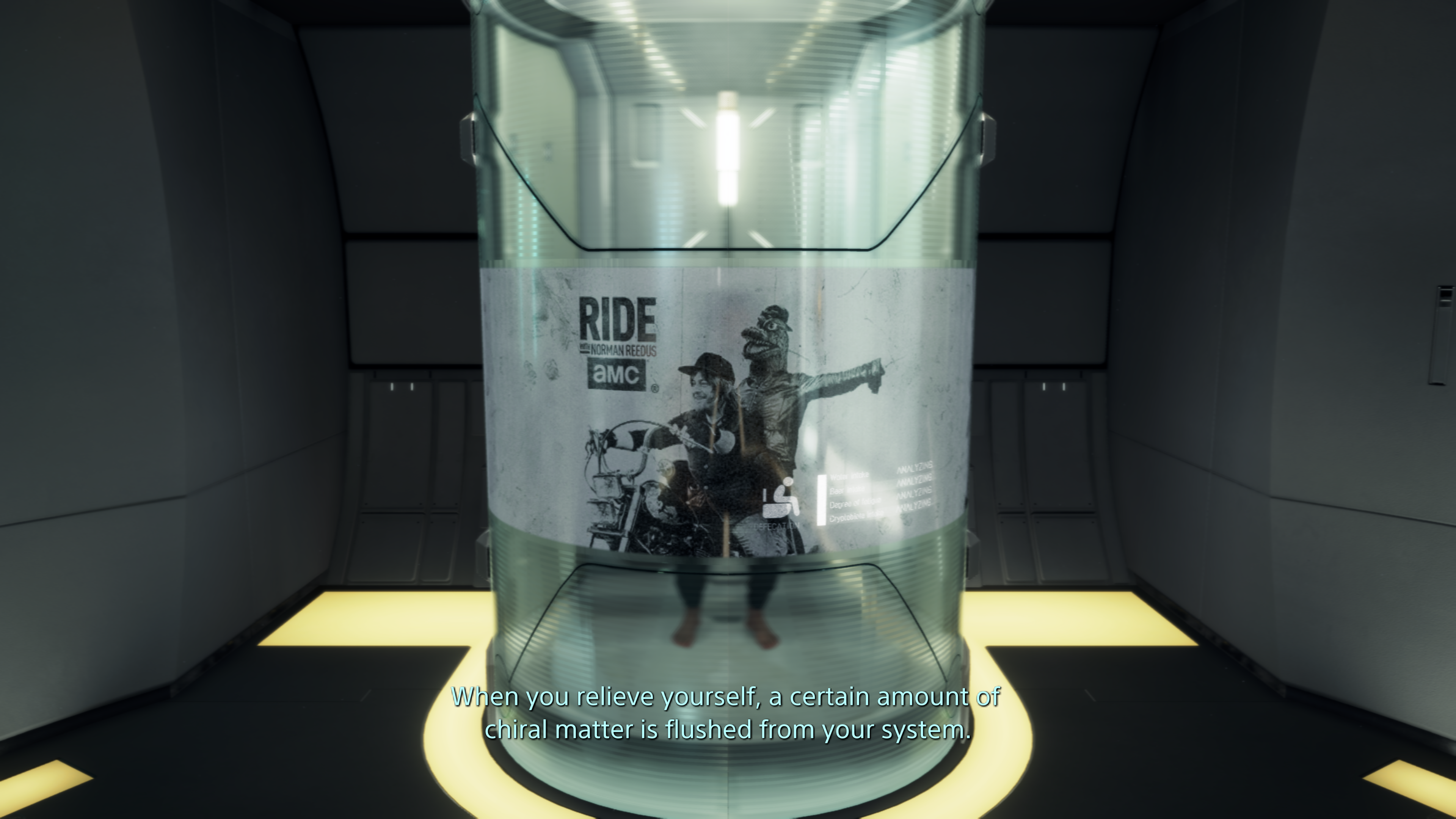
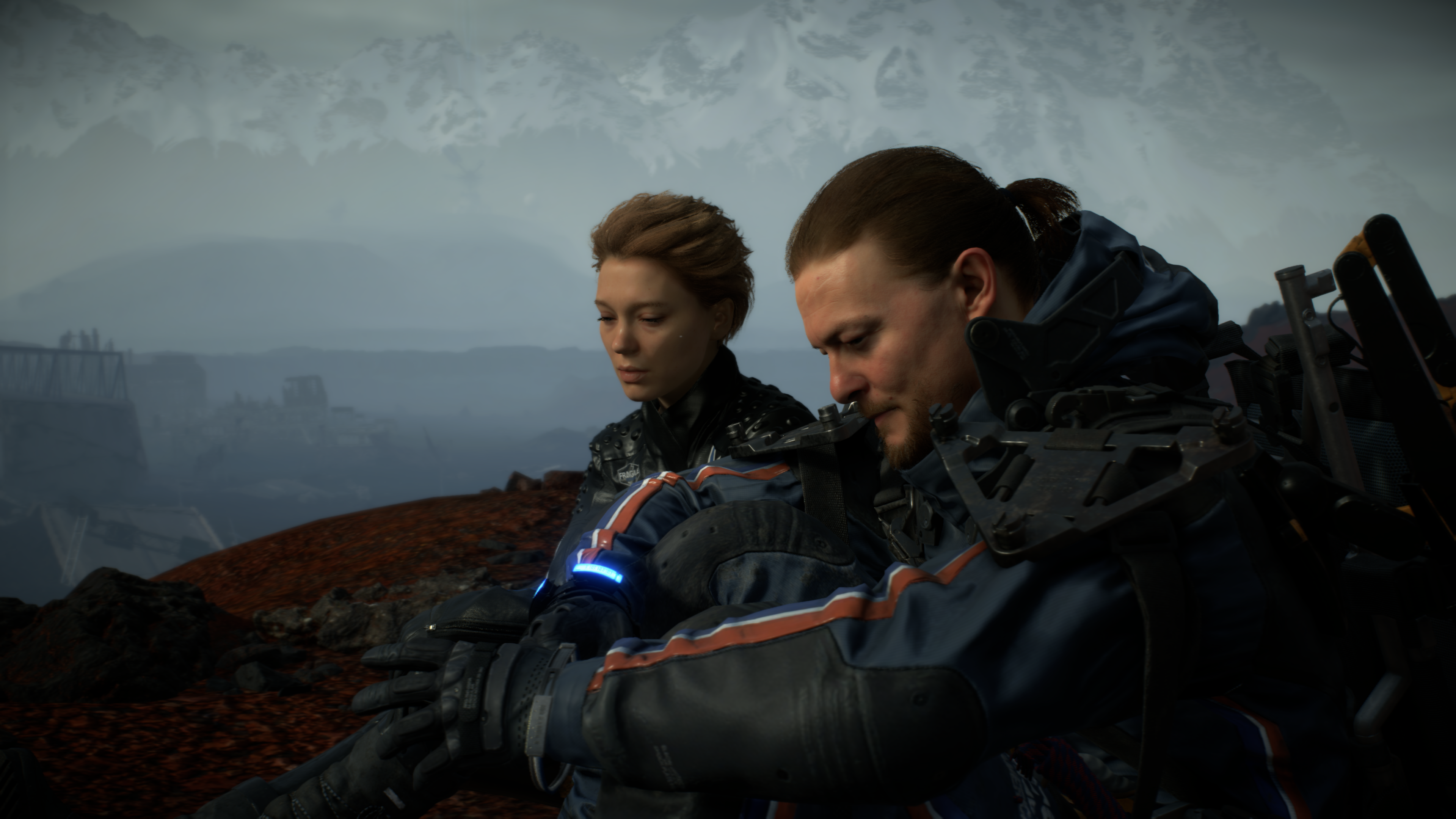


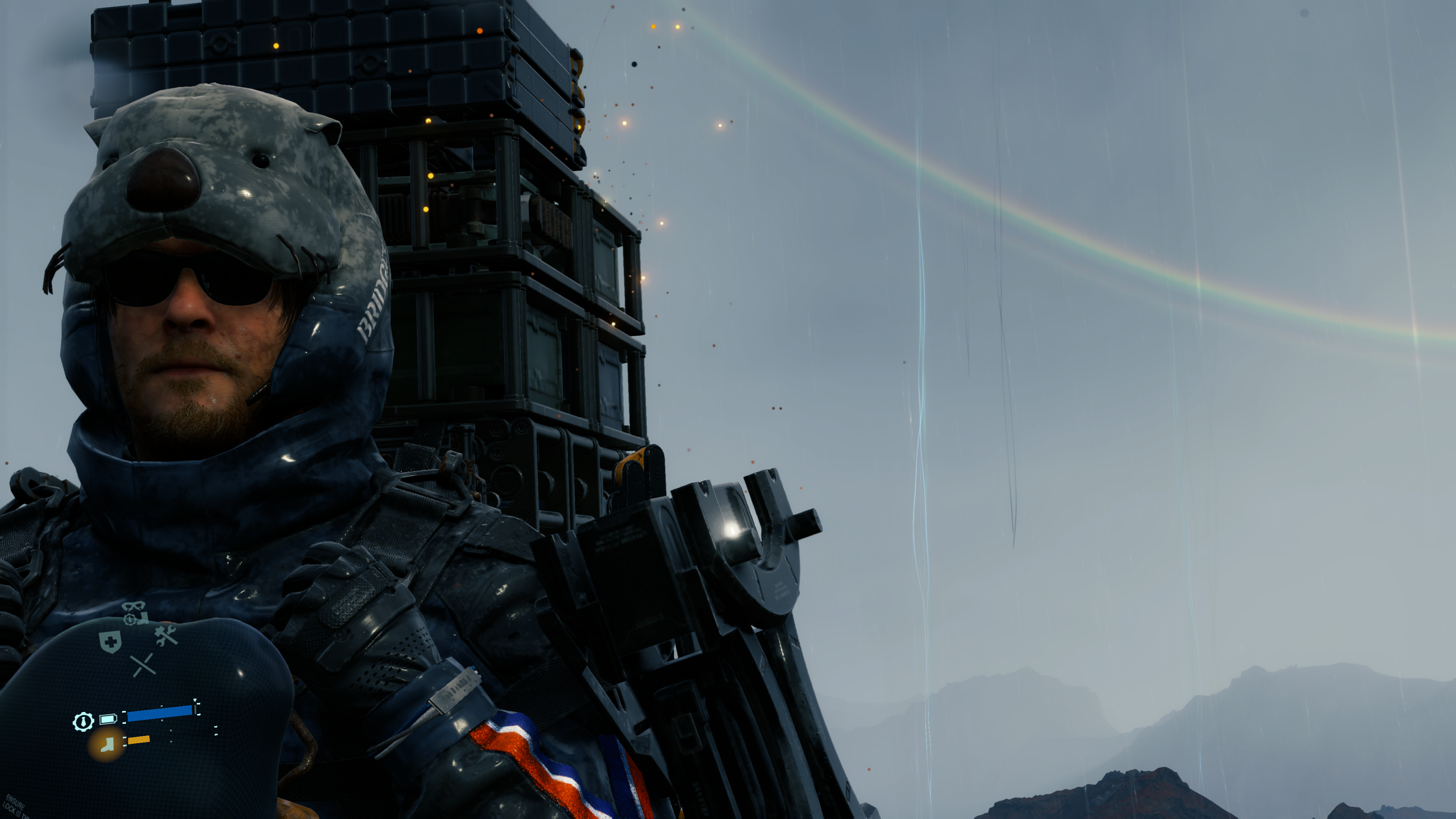
.jpg?width=291&height=164&fit=crop&quality=80&format=jpg&auto=webp)

